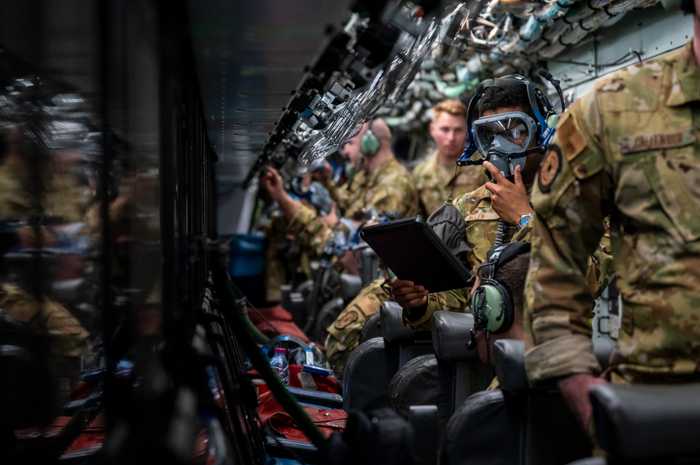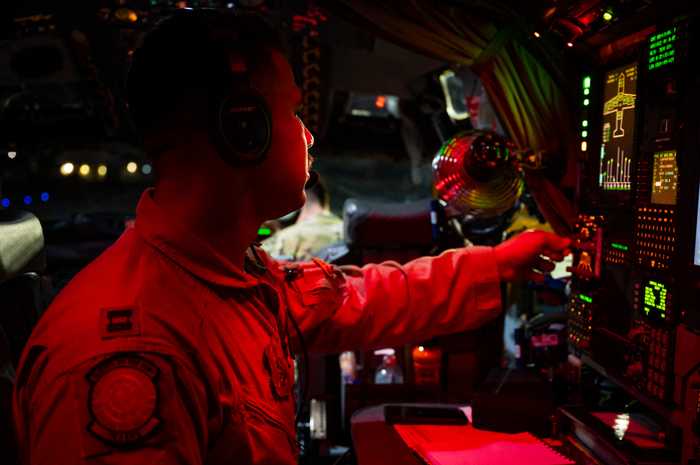Published 15:06 IST, August 27th 2024
US Air Force Prepares Dispersed Bases in the Pacific as Conflict Brews with China
The U.S. Air Force is accelerating its strategy to establish a network of dispersed bases across the Pacific as part of the Agile Combat Employment concept.
- Defence
- 3 min read
Washington DC, USA: The U.S. Air Force is accelerating its efforts to establish a network of dispersed bases and airfields across the Pacific, a crucial move in preparing for potential conflict with China. Air Force Chief of Staff Gen. David Allvin emphasized the need for robust active base defenses to protect these smaller operating locations under the Agile Combat Employment (ACE) concept.
The Air Force's strategy of spreading air operations is a response to the growing threat of missile attacks from China. The service fears that large, traditional air bases in Japan and Guam could be targeted, severely impacting the U.S.'s ability to launch aircraft in the region. To counter this, the ACE concept is being developed to ensure continuity in air operations by utilizing smaller, more dispersed locations.
Strengthening Smaller Operating Bases Is Crucial
Some of these ACE locations could include civilian airports or temporary bases set up with rough airfields, operated by smaller teams of "multi-capable airmen." These airmen are trained to perform multiple roles, such as fueling aircraft and providing security, which is crucial for the effectiveness of ACE in a contested environment. Gen. Allvin noted that recent exercises, like Bamboo Eagle, have successfully demonstrated the viability of ACE.

Bamboo Eagle, conducted at multiple sites across the Pacific and Nevada, allowed expeditionary units to train to operate within a simulated contested battlespace. The exercise also provided commanders with the opportunity to practice command and control over units dispersed across multiple field bases. Allvin expressed confidence in the progress but acknowledged that there is still a long way to go in achieving full operational readiness under ACE.
Collaboration with the Army to Enhance Base Defenses
While the ACE concept reduces the risk of massed missile strikes by dispersing bases, it does not eliminate the threat entirely. The Air Force is collaborating with the Army to develop countermeasures, particularly against ballistic and cruise missile attacks. Gen. Allvin did not specify the exact nature of these countermeasures but highlighted the need for mobile defence systems that can be deployed where they are most needed.

The Air Force is also considering the use of traditional deception tactics, such as camouflage and decoy targets, to confuse potential attackers. These tactics are being updated to suit modern warfare, where the decision to strike a target might hinge on whether it is perceived as real or fake. Additionally, passive defences against cyber and electronic warfare are being integrated into ACE bases to further enhance their resilience.
Multi-Capable Airmen Are Key to ACE's Success
The dispersed operations model under ACE presents command and control challenges, particularly in ensuring that aircraft have access to essential resources like munitions and fuel when landing at different bases. Gen. Allvin emphasized the importance of teaching airmen to perform multiple roles, a key aspect of the ACE concept. The Air Force is already adapting its training programs, with new recruits learning how to handle multiple responsibilities and existing airmen receiving cross-training.

The ACE concept represents a significant shift in how the U.S. Air Force plans to conduct operations in the Pacific, with a focus on flexibility, resilience, and adaptability. As tensions with China continue to rise, the need for a robust and dispersed network of bases is more critical than ever. The U.S. Air Force is taking proactive steps to ensure that it can effectively operate in a contested environment, but as Gen. Allvin noted, there is still much work to be done to fully implement the ACE concept and safeguard these vital assets.
Updated 15:06 IST, August 27th 2024